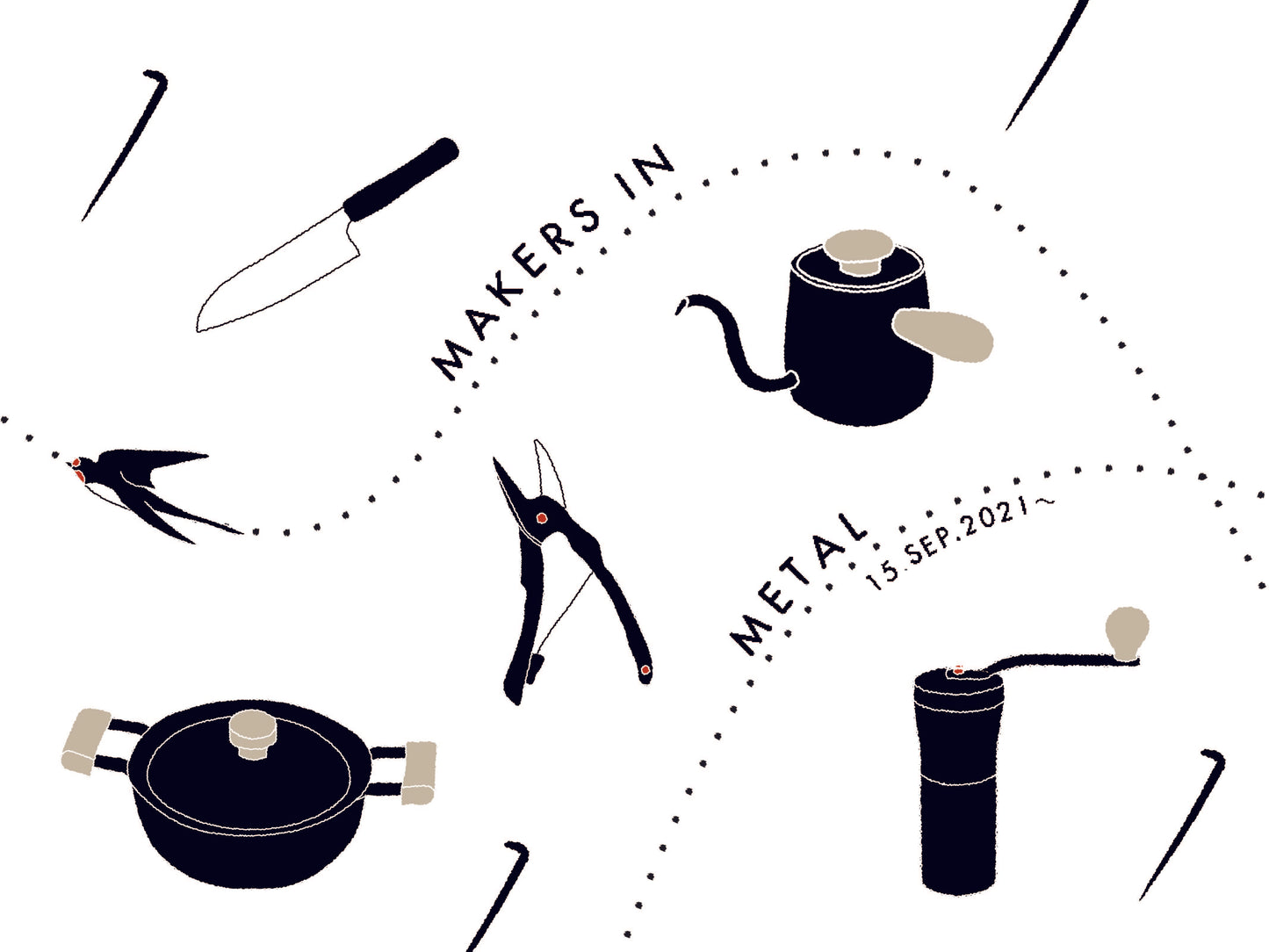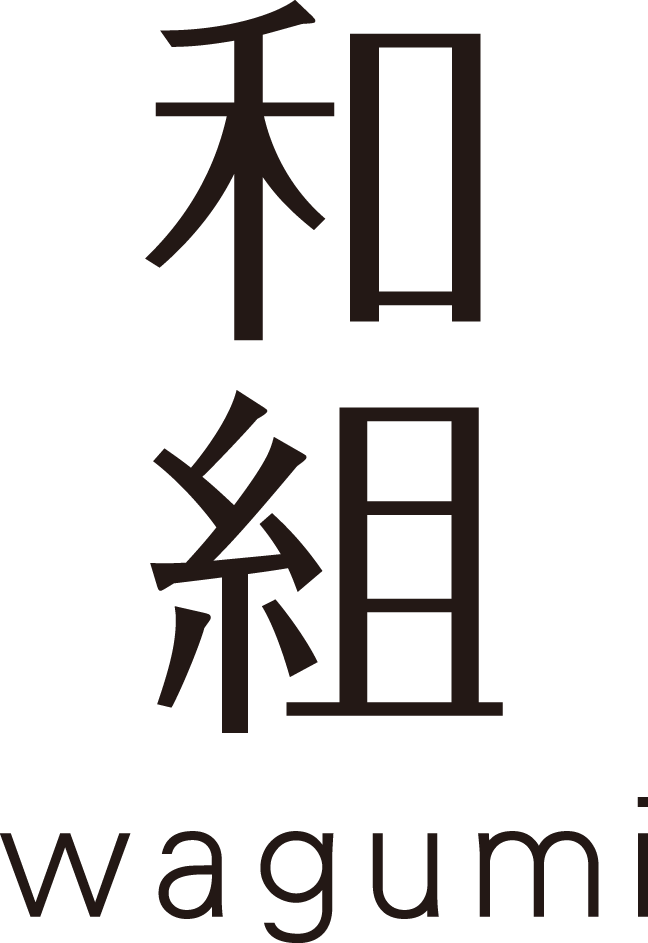
Beginning this month at wagumi we will present a collection of items from Tsubame-Sanjo in Niigata, northern Japan.
This is an area known for its legacy in metal craft, and for the innumerable small and medium size enterprises that are ever creating new items for use. They are masters in engineering, in craft, and in ideas for things that will make tasks a little more smooth and enjoyable.
Tsubame and Sanjo are in fact two towns in the fertile rice growing region of Niigata, separated by the Shinano river. This proximity to the river was the cause of near downfall for their part of the region, in an agricultural sense. The waters often flooded, and spoilt the crops, which in turn provided an impetus to have an industry to fall back on.
The initial niche the towns found was in making nails. Or rather ‘wakugi’, a specific Japanese form of nail used in joinery and construction, and much in demand in the growing cities. From this humble starting point, metal craft expanded in Tsubame and Sanjo. Nearby copper potential was another factor in the growth, and the fine tea ware hammered and shaped from single pieces of copper, remain a point of fame. Many within the guild of makers turned their operations to stainless steel in the twentieth century. High grade variants of this material, polished and imbued with utilitarian beauty, are in many ways emblematic of the area today.
The mid-century design metal kettle that you might spot in a scene in a film by Yasujiro Ozu, or Mikio Naruse, was probably made in Tsubame-Sanjo. Given the direction some firms took, and the growth they achieved in mass produced tableware - it is probably not an exaggeration to say that almost all Japanese kitchens have at least one item from Tsubame-Sanjo in them. The makers of the region claim there is nothing in metal that they can not make.
Our focus in this collection is on the small and medium sized makers in the region that produce humble, functional, hand crafted and well designed items for the home. We have items for example from the Gyokkodō company. Founded in 1919 by Toraji Kawasawa, the business initially reflected his training at the great maker of hand hammered copper: Gyokusendo. Karasawa’s firm however, shifted its operations to stainless steel in the early post-war era, and delivered classics to market such as its stove top kettle design under the Marutama brand name. Still in the family today, the firm neither compromises on the quality of its craft processes or in its search for new ideas.
Sampo Sangyo is another maker that explores niches in metal work for the catering trade and the home kitchen. The firm was founded in 1950, and began with items such as coffee pots, cocktail shakers and ice cream dishes. Including a well timed move before the 1964 Tokyo Olympics to supply the growing domestic hotel trade with a range of banquet ware, not to mention wagons for roast beef - the firm continues today to serve both business and individual customers with its Yukiwa brand. The polished and exactingly made items for kitchen and home are a world of fun to explore.
The material palate of those working in Tsubame-Sanjo is not in fact solely limited to metal. The company Kawasaki Jushi (Kawasaki Plastics) for example, as their name suggests, did not begin in metal. But what they in fact make today, is wonderfully functional portable coffee grinders with ceramic blades, and hammered metal or wooden finishes.
In fact, many things began in the region. The Japanese outdoor and camping brand Snow Peak, for example, has proud roots in the Tsubame-Sanjo guild of makers. The area is also known for the ramen made for hungry metal workers, and the ethos of quality improvement is applied to other things in life. The tasty matcha donuts made by the Yukimuro-ya company for example, who also have a refined line in roasted coffee beans, and tea, as used in the grinders and brewing equipment made in the town. This is before we mention some of Japan’s finest rice, in the close hinterland.
Farmers with a flooding problem, who then tried to solve it by making nails - the journey of the residents of Tsubame and Sanjo has lead them to a place today where they celebrate a certain quality in life. Tsubame is the Japanese word ‘swallow’, and items made in the town are often stamped with a metallic representation of the kanji character for this bird. Today this has come represent a refinement, and a reassuring strength in build.
Visiting Tsubame and Sanjo for a book published in 1948, the Japanese aesthete and philosopher Soetsu Yanagi, found metal tools for farming, yakan kettles, iron rice pots and more. He also placed a wary eye on the western cutlery beginning to be produced at scale. "If profit becomes the main element, then the attention to quality may start to fade… true development comes from making items that are sound." He need not have worried perhaps as later his son, Sori Yanagi, a renowned industrial designer, went on to produce a line of famous kitchen utensils, all made in Tsubame.
Makers in metal, the firms of Tsubame-Sanjo are at their heart simply makers. Practitioners in what in Japan is called ‘monozukuri’, which translates as the making of things, but includes a philosophy for patience, engineering improvement and quality. The process is part of the identity of the thing. And a dedication to making processes is what defines the towns featured here.




